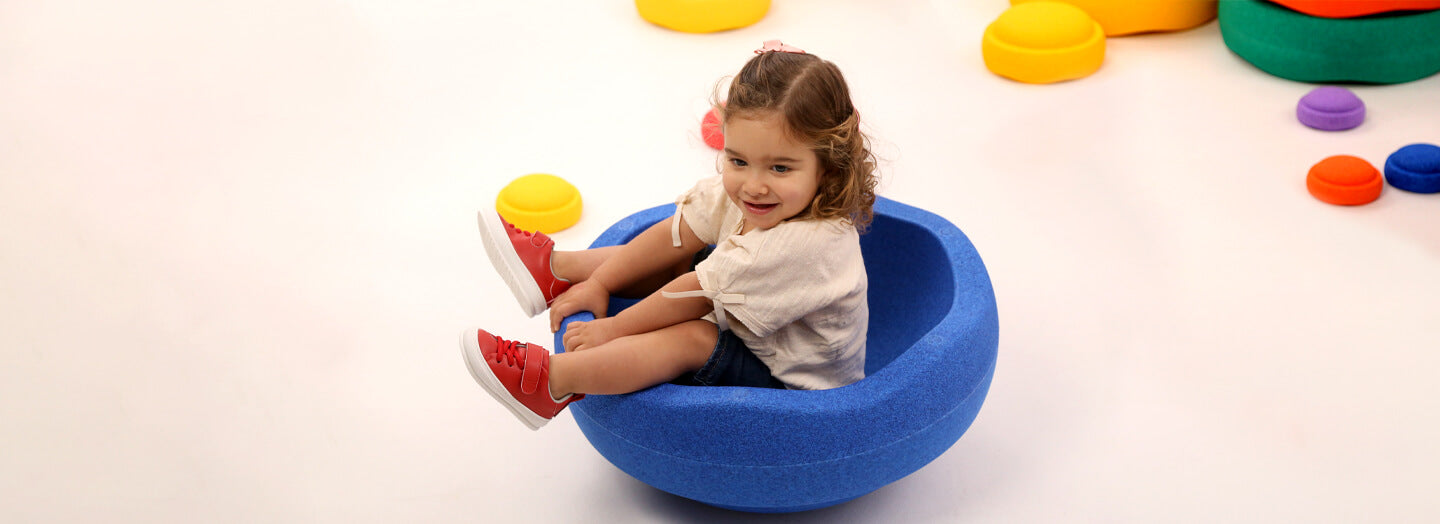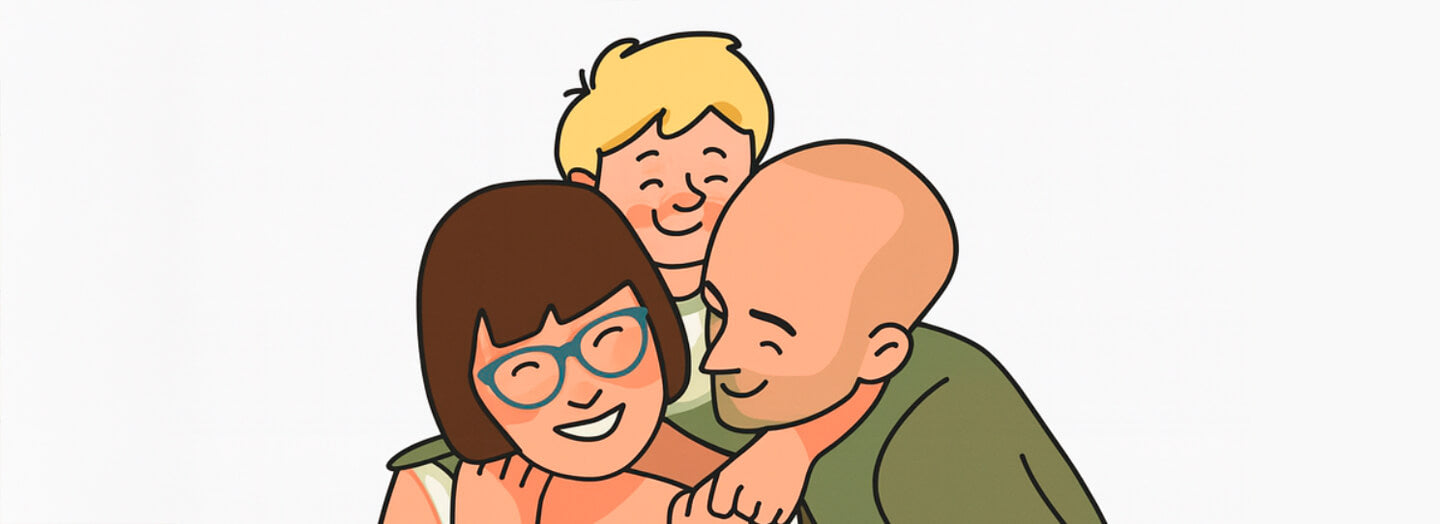If you're reading this, chances are your little one is about to start walking... and you're about to run after them! 🏃♀️👶 At Zapato Feroz, we know this stage is as exciting as trying to put a shoe on an octopus. 😅
We know that choosing the right footwear can be a minor family drama: between grandmothers' opinions, playground myths, and feet that never stop moving, you don't know where to start. But don't worry, that's why we've prepared this comprehensive guide. Because if your little one is about to begin their walking adventure, let them do it in style and with well-cared-for feet! 🌟👣
Why is it crucial to choose the right shoes when your baby starts walking?
Your baby's first shoe is much more than a cute accessory. During the first few years of life, children's feet undergo crucial development that will influence their way of walking throughout their lives.
A baby's feet are made up primarily of cartilage, which eventually ossifies to form the 26 bones in an adult foot. During this process, it's critical that the foot has the freedom to move and develop naturally.

Inappropriate footwear during this stage can:
- ❌ Alter the natural development of the foot
- ❌ Affect balance and posture
- ❌ Creating bad walking habits
- ❌ Cause unnecessary inconvenience.
On the contrary, appropriate footwear:
- ✔️ Protects without restricting
- ✔️ Allows natural development
- ✔️ Respect the balance
- ✔️ Provides protection in the first steps
What essential features should your baby's first shoes have?

At Zapato Feroz, we always say, "The best shoe is the one you don't notice." That's why your first pair of shoes should be ultra-flexible to allow your foot to move freely. The ultimate test? You should be able to bend the shoe completely in any direction with just one hand and effortlessly.👟

In addition to being flexible, the sole should be thin , allowing the foot to absorb most of the impact, and firm, to protect your baby's delicate soles . The shoe should have plenty of interior space, especially in the forefoot area, allowing the toes to move freely, and be completely flat, with no drop , meaning the heel should not be higher than the toe.

The shoe should hold the foot in place without constricting it. An adjustable closure system, such as Velcro or laces , allows the shoe to fit the baby's instep. The ankle area should be well supported but not excessively restrictive.
In addition, babies' feet tend to sweat more than adults'. That's why at Zapato Feroz we only use natural materials that allow the foot to breathe , such as leather, textile, or Feroz microfiber : completely breathable materials that are ideal for keeping feet cool and dry.
Finally, the insole should be removable , so you can check that the size and width are suitable for your little one, and completely flat, just like the shoe itself, which ideally will not have a heel counter or other reinforcements .
Ultimately, the most suitable shoe to accompany your baby in their first steps is one that can accompany them without restricting their freedom of movement or development. 
At what age does my baby need shoes?
This is one of the most frequently asked questions we receive, and our answer is always the same: when they start walking independently . Take a look at the main stages of your little one's motor development that will occur from birth until they begin to walk:
- 0-6 months 🍼: no shoes needed, just socks or booties to keep warm.
- 6-10 months 🐣: crawling phase, no shoes needed, can wear non-slip socks.
- 10-15 months 🐥: first steps, it's time to start using soft and flexible shoes.
- 15+ months (approx) 🐤: established gait and footwear for first steps.

Size Guide: How to Get the Right Size
If there's one thing all parents worry about when buying their little ones' first shoes, it's getting the size right. But is it really that difficult to measure a baby's foot? To make it easier for you, at Zapato Feroz we've created a complete Size Guide , which will help you both for that first pair and to update the sizes as your little one's feet grow (faster than you think 🤯!)

In addition, we give you some tips to always keep in mind that will help you choose the most appropriate size:
- Babies' feet also swell during the day, always in the last hours of the day .
- Consider the thickness of the sock 🧦 you will use with each type of shoe.
-
Measure both feet , as they may be slightly different. To choose your size, use the larger one as a guide.
- Always add a 12mm-15mm margin 📏to allow for continued growth.
- In addition to length, check the width of your foot to ensure there is enough room for your toes.
How often do babies change shoe size?
If you have young children, you probably already know: the speed at which they change and grow is astonishing 🚀. Clothes, shoes, accessories... everything gets smaller before you know it, and it's especially important to be vigilant when it comes to footwear, as the change isn't as obvious as it is with other items. Generally speaking, we can say that little ones need to have their footwear checked and replaced:
- Between birth and 15 months: every 3-4 months. Growth rate is approximately 2 cm per year.
- Between 15 and 24 months: every 3 or 4 months. Growth of approximately 2 cm per year.
- Between 2 and 3 years: every 4 to 6 months. Growth of approximately 1.5 cm per year.
Common mistakes when choosing your first shoe
Buying your baby's first shoes is a crucial moment, and inexperience can lead you to make some common mistakes. We'll outline them here so you can avoid them:
- Choosing shoes that are too stiff : Your baby looks so tender and small that you inevitably want to protect their feet at all costs. However, contrary to what was previously thought, forget about hard, rigid shoes and opt for barefoot models, which are more respectful of child development. Avoid rigid heel counters, thick, hard soles, and high, rigid boots.
- Wrong size : Toddlers grow so fast that we often tend to buy a larger size than they need to save money, hoping that the garment will last a little longer. When it comes to footwear, this is almost as harmful as buying a size that is too small, as it can cause stumbling, creating insecurity in the little one that makes walking difficult.
- Incorrect materials : Remember that the material is almost as important as the fit. Forget non-breathable materials and make sure the insole is removable.
-
Inappropriate designs : We all want our little ones to look beautiful (and, in fact, they always do, regardless of the clothes or shoes they wear). Don't be swayed by fashion and avoid buying shoes with too many decorative elements that increase the shoe's weight or impede its flexibility, and with narrow toe boxes or inadequate closure systems, such as buckles, laces that are too thin, or low-quality Velcro.
- Improper timing : Starting shoes too early isn't conducive to your baby's development, but waiting too long can cause foot damage when they start walking. The right time to start wearing shoes is no less than when they start taking their first steps 👣.
Where can I buy my baby's first shoes?
After everything we've told you as passionate people on the subject (and because we put our all into doing it right), we can't recommend anything better than... ta-da ta-da ! Feroz Shoe !
We know your little one's first steps are an epic moment (family album-level obligatory!), and that's why we design respectful footwear that accompanies without limiting them. So their feet stay free and happy forever. Find the right style for your little one in our Baby section. 
And because little ones grow at lightning speed, our shoes grow with them. Here's the collection for not-so-intrepid little ones .
And if you're one of those who prefer to touch, try, and be advised by real people, stop by Ferozland , our physical store in La Cañada, Valencia. A magical place where children are the real stars. 😻






